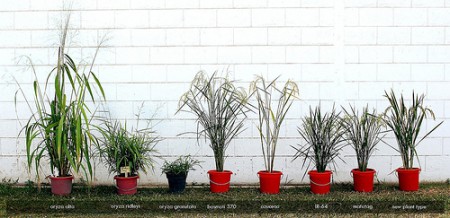In the past few weeks there’s been a number of papers on the genetics of rice domestication. I’ll just give you the main findings here, and leave you to battle with the details on your own. With the help of various other bloggers.
Dorian Fuller did a great job of summarizing the multiple domestication (or indica and japonica) theory at The Archaeobotanist a couple of weeks back. This seems to have the upper hand at the moment. Wild perennial rice is cultivated in wetland margins in the Neolithic Yangtze, and as the water ecology begins to be altered by humans, creating seasonal drought conditions to stimulate seed production, particular adaptations are selected (annuality, short stature, less branching etc.), which leads to the domestication of japonica rice. This is then taken to the area of an independently-domesticated proto-indica, probably around 3800-4000 years ago, and some genes are exchanged. So far, so good, and there is now a pretty comprehensive database of rice archaeology to back up the recent studies of single and multiple genes.
Well, certainly the “genetic and selective basis for domestication” seem to be different for japonica and indica, but another recent paper throws some doubt on the multiple domestication idea. Now, I’ve briefly discussed this with people who know a lot more about rice than I do and it seems the main sticking (as it were) point is the dating of the indica-japonica split to 3,900 years ago. Previous estimate were in the hundreds of thousands of years, supporting the multiple domestication theory, but the problem is that the newer, lower estimate was based on domestication genes only. Lots more argument on the horizon, I suspect.
